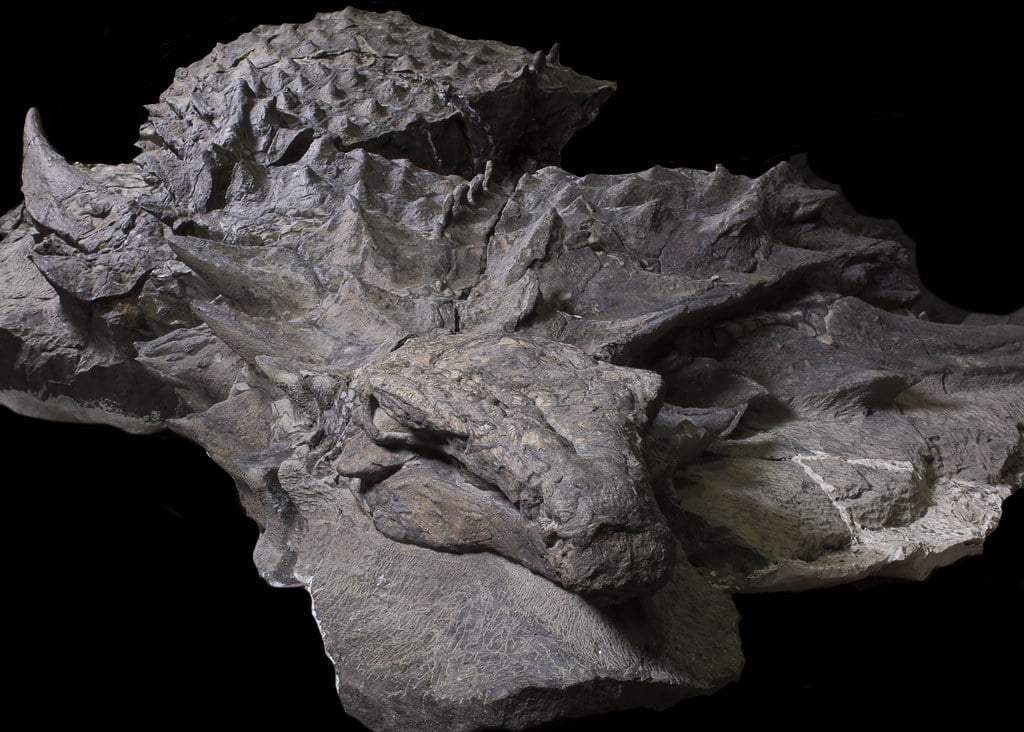
Recently Discovered Dinosaur ‘Mummy’ Is So Well-Preserved It Even Has The Skin And Guts Intact
Technician Mark Mitchell prepping the Nodosaur. Royal Tyrrell Museum
But how ‘lifelike’ is the specimen really? Well, apparently the preservation was so good that researchers were able to tell the dinosaur’s skin color by using mass spectrometry techniques to detect the actual pigments.
This way they found out that the nodosaur’s coloring was a dark reddish brown on the top of the body – and lighter on the underside. Since this dinosaur was an herbivore, its skin color must have played a role in protecting it from the enormous carnivores present at the time.
And the fact that we’re talking about a massive, heavily-armored dinosaur illustrates just how dangerous those predators must have been…
But how ‘lifelike’ is the specimen really? Well, apparently the preservation was so good that researchers were able to tell the dinosaur’s skin color by using mass spectrometry techniques to detect the actual pigments.
This way they found out that the nodosaur’s coloring was a dark reddish brown on the top of the body – and lighter on the underside. Since this dinosaur was an herbivore, its skin color must have played a role in protecting it from the enormous carnivores present at the time.
And the fact that we’re talking about a massive, heavily-armored dinosaur illustrates just how dangerous those predators must have been…
Advertisements
06 December 2023
Advertisements



